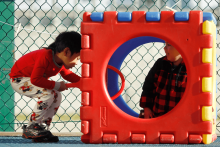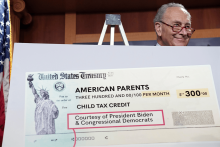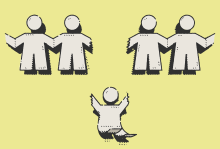children's defense fund

In Proverbs 22:6, the author commends parents and educators to “train up a child in the way he should go: and when he is old, he will not depart from it.” Yet thanks to harsh school punishment policies, including suspension for preschoolers, many children are being trained to see their own typical emotional or academic frustrations as cause for strict discipline — or even incarceration.

During the pandemic, something peculiar happened: The child poverty rate in the U.S. fell, reaching an historic low of 5.2 percent in 2021. The decline was largely a result of the federal spending in social safety nets like Medicaid, SNAP, and the Child Tax Credit, as well as direct payments to families. Anti-poverty advocates celebrated the win.

ONE OF THE most most frustrating times as a parent was when one of my toddlers would begin to cry and I was in the next room. Of course, I would rush right over. But once I got there, I wasn’t sure whether they were sick or had bumped into the couch. Between the pain, early language development, and their weeping, it was hard to diagnose the situation. I relied on a question my toddler could answer by pointing: “Where does it hurt?”
As we—adults, parents, faith leaders, and communities—rush to enter a post-pandemic reality, we would do well to pause and ask young people how the last year and a half has impacted them. Patient listening may lead to prophetic grief. As the prophet Jeremiah reminds, “For the hurt of my poor people I am hurt, I mourn, and dismay has taken hold of me” (8:21).
For 30 years, the Children’s Defense Fund (CDF) has plumbed the best available research to answer this question for young people: Where does it hurt? CDF’s “State of America’s Children” report, released this spring, analyzes this data and paints a picture of child well-being and our challenges ahead. The information makes clear that our children have not been immune to the crises of public health and racial injustice we have faced. As of February of this year, 13 percent of the COVID-19 cases in the U.S. were children. They are hurting physically, socially, emotionally, and economically.

All children growing up in poverty are noble, beautiful flowers growing through cracks in concrete sidewalks. They are vulnerable to the frost of hunger, the hard rains of sickness, and the crushing footsteps of violence.
Marian Wright Edelman and the Children's Defense Fund remind us in Protect Children Not Guns 2012 that 5,740 children and teens were killed by guns in 2008 and 2009.
Those children would have filled 229 public school classrooms of 25 students each. Because of gun violence, desks now sit empty that might have held the next great scientist or writer or parent for the world.